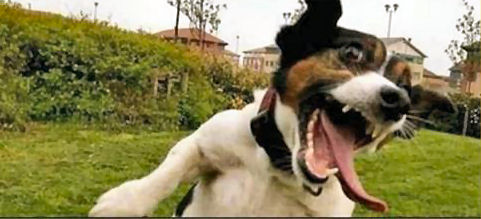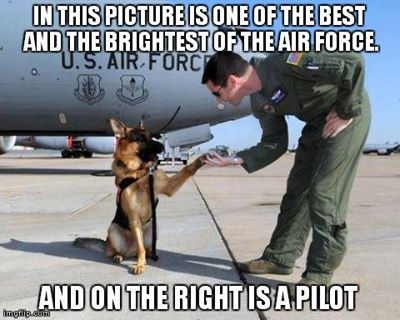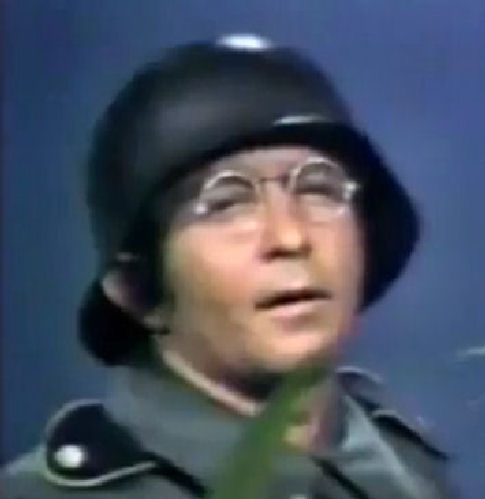 |
||
|
||
|
Privacy Policy | Editorial Policy | Profit Policy | Join the Association | List of Members | Contact us | Index | Links |
||
|
Back Go to page: 1 2 3 4 5 6 7 8 9 10 11 12 13 14 15 16 17 18 19 20 Forward |
||
|
Allan George’s Gems.
|
||
|
|
||
|
Navy Fleet Air Arm to the rescue ! Tom Ware.
In 1955, trainee pilot, Anthony Thrower, was feeling proud of himself, he’d been flying solo; doing circuits and bumps in a little Auster (similar to that below) at Bankstown Aerodrome, in Sydney’s South-west. On his last landing the engine of his little aircraft started to play up so he did a full stop landing to check it. Finding nothing wrong, he simply swung the prop to restart the engine. |
||
|
|
||
|
The engine roared to life. Unfortunately, Tony had forgotten to apply the hand-brake and chock the wheels, so the little high-winged monoplane started to move. Somehow, the force of the “start-up” caused the throttle to slide and the aircraft’s engine revs built up. It rolled forward at startling speed. Tony tried to grab a wing-struck as it sped past. He was unsuccessful. He missed. The next instant the aircraft, after rolling a very short distance, was airborne - and climbing steadily into the North-west.
Tony stood there aghast. The little two-seater aircraft continued to climb. It crossed the George’s River and was now hundreds of feet in the air and the way it was flying, climbing steadily in a straight line, the tiny blue Auster looked like it would go forever. Suddenly, there was a slight shift in wind and the aeroplane swung completely around, diving straight at the hapless pilot. For a moment Tony stood frozen in fear. Then he threw himself on the ground as the airplane sped overhead its wheels almost touching the grass landing strip.
But it was up and away again. It seemed this pilotless aircraft had a mind of its own. And it was a mind filled with the joy of total freedom. It sped past the old control tower, convincing those working in it that they’d be safer elsewhere. Then it buzzed the corrugated-fibro roof of the De Havilland Aircraft Factory. People scurried out to take a look. This wasn’t something you saw every day.
By now, Tony had managed to leg it to the operations room where he almost incoherently blurted out the news of what had happened. It was a quarter to nine in the morning. A lot was to happen in the time ahead.
The Air-traffic Controller at Bankstown was a good man in a crisis. Searching the skies and clutching his microphone, he informed all aircraft in the vicinity, (i.e. those that could hear him on radio frequency 118.1meg) that a little blue Auster was flying out of control “somewhere out there.” Then he swung the handle of the old fashioned telephone which would put him in direct contact with the Senior Operations Controller at Sydney Airport.
Sydney Airport, or Kingsford Smith Airport, as many call it, is located about ten miles to the east and right on the coast at Botany Bay. Even in those days it was a busy place, with airliners landing every few minutes. As fate would have it, flying back to nearby Schofield Airfield were four Royal Australian Navy aircraft which had been on manoeuvres. One of these RAN pilots, Peter McNay, immediately replied that he would seek out and “keep his eye out,” as to the goings on of the errant blue Auster. It was merely co-incidental that his plane was an almost identical Auster. With one exception. His was painted red. The runaway was blue.
“Confirm your following a runaway red Auster J1 type, and that you’re in a similar type, but Blue in colour?” asked the Bankstown ATC. “Negative - Not the red Auster. Not the red Auster - I’m in the red Auster”.
At that moment one of TAA’s brand new British-built Vickers Viscount turbo-props (the nose cone of this aircraft is now on display at the Qld Air Museum at Caloundra) was making its way up from Melbourne. The Viscount pilot’s message to the sector controller at Sydney went something like this: “Sydney Control, this is Tango Victor Juliet, abeam Marulan, flight level 190, estimating Sydney at 2320 (GMT). Airep. Wind 310/40 knots, outside temperature minus 24 degrees Charlie — trace of cirrus to North-west. Any traffic for our descent?” |
||
|
|
||
|
The pilot was not amused when he was told that there was an unmanned Auster at that time heading towards Kingsford Smith Airport from the west, accompanied by at least one other aircraft.
By now, of course, the little runaway Auster had risen to around three thousand, then four thousand feet. It had traversed Bankstown, Punchbowl, Bexley and Hurstville. It seemed to meander aimlessly, its nose moving this way and that. But all the time it headed eastwards towards the more densely populated parts of the city. Now it was heading for Rockdale, right on the southern approach paths to Sydney’s major airport. At 9.30am, an air-investigator at the Department of Civil Aviation’s New South Wales Headquarters at Waverton, North Sydney, had telephoned the Army, Navy, Air Force and the New South Wales Police Force. He alerted the Metropolitan Fire Brigade and the Central Ambulance Service. He’d also contacted his Regional Director and was thinking about calling the Aviation Minister, in Canberra.
He didn’t need to telephone the media. They already knew. Half-a-dozen radio stations were already broadcasting the whereabouts of the runaway. After all, there were thousands of witnesses willing to report back information. In addition to this, a Sydney radio station and Police radio were keeping up a running commentary as to what was going on.
Meanwhile, the RAN Auster was it hot pursuit of the unmanned aeroplane. It shadowed its every movement. It got so the people on the ground were not sure which plane was which. By now, all manner of reports were coming in from a multitude of sources - some hopelessly out of date. But by 9.53am the blue Auster and her red-coloured consort, had traversed Mascot, Alexandria, Redfern and the Central Business District of the city. It was now flying at 5,000ft over the posh suburb of Vaucluse. The silver tails were not amused. Of course there was all sorts of talk about it. One disc jockey suggested they get a trapeze artist from a circus and swing him into the runaway. Sounded good. But nobody knew any trapeze artist who could fly an aeroplane. Various methods of boarding were discussed. Then the talk turned to shooting it down. But who would do it, where and when. No point in bringing it down onto the crowded streets of Australia’s largest city.
At 10.10 that morning the first blow to rid the skies of this nuisance
aeroplane was unofficially struck. (It was unofficial until the
newspaper reporters found out about it). An ageing Royal Australian Air
Force prop-driven fighter, a Wirraway (similar to the one below),
departed Richmond Air Force Base with two senior officers in control.
The rear canopy and fairing had been taken off the Wirraway, thus
allowing an unrestricted view from an open
In the meantime, the runaway with its escort double had passed over Vaucluse, crossed the Harbour, reaching a point just inland of Palm Beach, Sydney’s most northerly suburb at that time, before turning seawards. By this time, quick-thinking business entrepreneurs had set up hot-dog stands and were doing a roaring trade to the many “watchers of the sky.” People were taking bets. “Where will it come down?” “Which way will it go next?” “Which of the two planes is the runaway?” “Yeah, pal — they do look both the same, don’t they?”
Some minutes later, the following was heard on ATC frequency:
There was no mention of a gun. But Peter McNay in the red Auster aircraft saw the barrel of this weapon being pointed in his direction. He yelled:
There came the rattle of gunfire; two short bursts, then silence.
Silence. Followed by a lot of very bad language which wasn’t censored.
It has been said that a real gentleman would have worn white gloves. After all, this was going to be the funeral of an aeroplane. The man on the gun in the rear seat was not wearing any gloves - not even mittens. Not even a pair of old socks. The machine-gun got hot, our good aviator’s hands, at five below zero were very cold indeed.
This was followed by the Wirraway’s pilot reporting that his gunner was unable to reload the Bren gun with a new magazine as his hands were stuck fast to the freezing metal on the weapon’s breech.
The little blue Auster sailed fearlessly on. It was now 10.20am. It had been in the air for over an hour-and-a-half. Moreover, it had now climbed to 7,000 feet and was nearly three miles out to sea.
That’s when Squadron Leader M. Holdsworth and Squadron Leader J.H. Flemming got into the act. At 10.30 word came in that two of the Air Force’s finest were being despatched, two Meteor jet interceptors from Williamtown. Unfortunately, a Sabre had landed on the same strip the Meteors were to leave on, burst a tyre, and lay stricken, unable to move for another thirteen minutes. The Air Force’s finest were delayed.
This problem overcome, the Meteors headed south, flat out in their
eagerness to get to the
It wasn’t very long before Sqn Ldr Holdworth’s nasal tones came over the airwaves.
Well, that was sorted out. A few moments later, Meteor One came tearing in, its four half-inch calibre cannons blazing. Bang Bang Bang!
Then silence. Then curses.
Then a sheepish voice.
Another voice.
And so it went on. As did the little blue Auster.
But all was not lost. At that very moment, speeding up from their naval base one hundred miles to the south came a pair of Sea Furies. They were propeller driven aircraft and looked not a lot unlike the famous World War Two, Spitfire. They were out of HMAS Albatross, the naval air station at Nowra. At their controls were none other than lieutenants Bob Bluett (ex Korean War Veteran who’d seen action from the flight deck of HMS Glory) and Peter McNay. Both pilots were Royal Navy officers on exchange duty with the RAN.
|
||
|
|
||
|
These intrepids were being vectored to their target by radar operators at HMAS Watson, at Sydney’s South Head. “Thank God, for the navy,” people were later to say. The runaway was now at an incredible ten thousand feet and seven miles out to sea off Broken Bay, i.e. Barren Joey Light.
The bullets flew. Peter McNay got in a short burst from astern, then Bob Bluett put in the Coupe-de-Grace, a long burst from his four 20mm cannons. The little Auster seemed to stagger under the impact as the shells tore into it. A moment later it burst into flames.
Over and over the little blue Auster tumbled out of a clear blue sky. Splash, into the waters of the South-west Pacific it went. It was almost an anti-climax. For it was far too far out to sea for those who had followed the drama to see much.
It was all over. Police radio put over the message. It was 11-45am. The little blue runaway Auster had been in the air for nearly three hours. That’s longer than it took the Titanic to sink.
Click the video below to see a recreation of the incident. |
||
|
|
||
|
|
||
|
|
||
|
Click the pic to see what it’s really like!!
|
||
|
Bob Hoover.
Robert A. "Bob" Hoover (born 24th January, 1922) is a former air show pilot and United States Air Force test pilot, known for his wide-brimmed straw hat and wide smile. In aviation circles, he is often referred to as "The pilots' pilot."
Hoover learned to fly at Nashville's Berry Field while working at a local grocery store to pay for the flight training. He enlisted in the Tennessee National Guard and was sent for pilot training with the Army. During World War II, he was sent to Casablanca where his first major assignment was test flying the assembled aircraft ready for service. He was later assigned to the Spitfire-equipped 52nd Fighter Group in Sicily. In 1944, on his 59th mission, his malfunctioning Mark V Spitfire was shot down by a Focke-Wulf Fw 190 off the coast of Southern France and he was taken prisoner. He spent 16 months at the German prison camp Stalag Luft 1 in Barth, Germany.
Hoover managed to escape from the prison camp by stealing a Fw 190, and
flew to safety
He left the Air Force for civilian jobs in 1948. This included a brief time with the Allison Engine Company and finally test/demonstration pilot with North American Aviation where he went on to Korea teaching the pilots in Korean war how to dive-bomb with the F-86 Sabre, and visited many active-duty, reserve and air national guard units to demonstrate the plane's capabilities to their pilots. Hoover flew flight tests on the FJ-1 "Fury", F-86 "Sabre", and the F-100 "Super Sabre".
In the early 1960s, Hoover proposed the idea of promoting the North
American name by
Hoover has set records for transcontinental and "time to climb" speed and is best known for his civil air show career which started when he was hired to demonstrate the capabilities of Aero Commander's Shrike Commander, a twin piston-engined business aircraft which had developed a rather staid reputation due to its bulky shape. Hoover showed the strength of the plane as he put the aircraft through rolls, loops, and other manoeuvres which most people would not associate with executive aircraft. As a grand finale, he shut down both engines and executed a loop and an eight-point hesitation slow roll as he headed back to the runway. He touched down on one wheel, then the other, before landing. After pulling off the runway, he would start engines to taxi back to the parking area. On airfields with large enough parking ramps Hoover would sometimes land directly on the ramp and coast all the way back to his parking spot in front of the grandstand without restarting the engines. |
||
|
|
||
|
A few years after starting the show, he began carrying passengers during the actual show. (The Shrike Commander could carry six passengers.) These passengers became known as "Hoover's Heavers" due to the number who became airsick during the manoeuvres. With the advent of camcorders, Hoover added a flourish to the act by pouring a glass of iced tea from a pitcher, all while performing a barrel roll without spilling a drop.
He also served for many years as the official starter of the Unlimited-class races at the Reno Air Races. The race planes (mostly modified World War II fighter aircraft) joined up in line-abreast formation on Hoover's yellow P-51 Mustang, and when in satisfactory order, the spectators would hear over the PA his famous radio call, "Gentlemen, you have a race." Hoover's plane would pull up sharply into a vertical climb as the racers dove toward the first turn. Hoover would circle overhead during the race, ready to assist any race pilots with problems. In several cases, Hoover helped pilots with crippled race planes make a safe recovery by talking them down while flying in formation with them.
His air show aerobatics career ended over medical concerns, when his medical certificate was revoked by the Federal Aviation Administration (FAA) in the early 1990s. Shortly before his revocation, Hoover experienced serious engine problems in a T-28 off the coast of California. During his return to Torrance, he was able to keep the engine running intermittently by constantly manipulating the throttle, mixture, and propeller lever. Just as he landed the engine froze. Hoover believed his successful management of this difficult emergency should have convinced the FAA that his capabilities were as good as ever. Meanwhile, Hoover was granted a pilot's licence, and medical certificate, by Australia's aviation authorities. Hoover's medical certificate was restored shortly afterwards, and he returned to the American airshow circuit for several years before retiring.
One of Bob’s perhaps undesired legacies is the "Hoover Nozzle" used on jet-fuel refuelling hoses. The Hoover Nozzle is designed with a flattened bell shape which means it cannot be inserted in the filler neck of a plane with the "Hoover Ring" installed, thus preventing the tank from accidentally being filled with jet fuel. (This is similar to the different hose nozzles we have at our servos - petrol and diesel).
This system was given this name following an accident in which Hoover was seriously injured, when both engines on his Shrike Commander failed during take-off. Investigators found that the plane had just been fuelled by line personnel who mistook the piston-engine Shrike for a similar turboprop model, filling the tanks with jet fuel instead of avgas (aviation gasoline). There was enough avgas in the fuel system to taxi to the runway and take off, but then the jet fuel was drawn into the engines, causing them to stop. Once Hoover recovered, he widely promoted the use of the new type of nozzle with the support and funding of the National Air Transportation Association, General Aviation Manufacturers Association and various other aviation groups (the nozzle is now required by Federal regulation on jet fuel pumps).
You can see a short video of his flying skill HERE.
|
||
|
Overheard in a bar: “Some people are so illiterate they don’t realise that without the wonders of electricity we would all be watching TV by candle light”.
|
||
|
Who had the first Jet??
The Lockheed aviation company was the first in the United States to
start work on a jet-powered aircraft. The L-133 design started in 1939
as a number of "Paper Projects" by engineers Clarence "Kelly" Johnson,
Willis Hawkins and Hall J. Hibbard. By 1940 preliminary work on a
company-financed jet fighter had been started, which progressed to
several
Throughout World War II, the development of a jet-powered fighter had the potential to bring a decisive advantage in the air battles of the war; as history played out, only Germany built significant numbers of jet fighters before the war ended, and they reached service in the Luftwaffe too late to make a difference.
On March 30, 1942, Lockheed formally submitted the L-133-02-01 to the USAAF for consideration. Powered by two L-1000 turbojets and featuring a futuristic-appearing canard design with slotted flaps to enhance lift, the single-seat fighter was expected to have a top speed of 612 mph (985 km/h) in level flight, but a range of only 310 mi (500 km). The L-133 had a main wing shape that was essentially that of the outer wing sections of a Lockheed P-38. In many respects the L-133 was far ahead of its time, with futuristic features including:
· canard layout; · blended wing-body platform; and, · two engines in a very low-drag integral fuselage location.
The USAAF considered the L-133 to be too advanced for the time, and did not pursue the project. The experience gained with the design served Lockheed well in the development of the USAAF's first operational jet fighter, the P-80 Shooting Star. Although entering service after the war had ended, the P-80 was less advanced than the L-133. Because the USAAF didn't give the L-133 project the go-ahead, the advanced engines intended for the L-133 had long pauses in their development. The most expedient engine choice for the P-80 thus became the Allison J33, based on British centrifugal compressor designs. The P-80 was a cheap-to-build single-engine aircraft with a conventional wing and tailplane design, not using the blended wing-body and canard layout of the L-133.
You can see video of the development of the L-133 HERE.
|
||
|
|
||
|
I bought a dog once, called him “Stay”. I’d say, “Come here Stay”……….He’s insane now! |
||
|
|
||
|
|
||
One of The Largest Flyovers In US History To Take Place In May.Dozens of vintage aircraft will fly over the National Mall in Washington on May 8. The Arsenal of Democracy is hosting a flyover to celebrate the 70th anniversary of the World War II victory in Europe. The flyover claims it will be the largest flight of aircraft to fly over D.C. According to a release, more than 70 "war-birds representing the major battles of World War II" will fly over the D.C., from the Lincoln Memorial to the Capitol, in special "historically sequenced formations." The whole celebration kicks off on May 7, with a victory gala celebration at the Air & Space Museum. The flyover will occur the next day with formations and aircraft that honour the "major battles of World War II, from Pearl Harbour through to the final air offensive to defeat Japan."
|
||
|
|
||
|
Paddy and Mick stagger out of the zoo with blood pouring from them.. "Bollocks to that" said Paddy "That's the last time I go lion dancing" |
||
|
|
||
|
|
||
|
|
||
|
Velly Intelesting – but stupid!!!!
|
||
|
|
||
|
|
||
|
Back Go to page: 1 2 3 4 5 6 7 8 9 10 11 12 13 14 15 16 17 18 19 20 Forward |
||
|
|
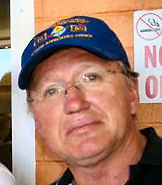
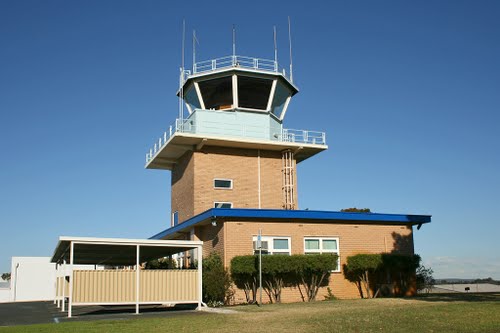
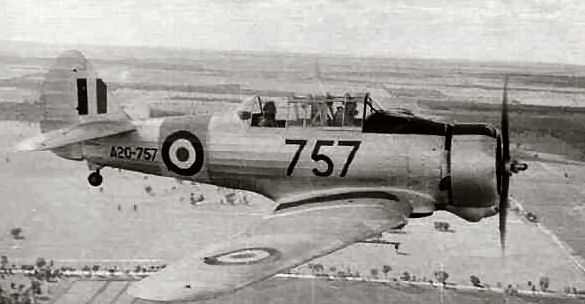 cockpit. The pilot in the rear canopy had a fully loaded Bren gun in his
hands. On his lap, half-a-dozen spare magazines filled with 303 calibre
bullets. These two blokes were going to shoot down an airplane.
cockpit. The pilot in the rear canopy had a fully loaded Bren gun in his
hands. On his lap, half-a-dozen spare magazines filled with 303 calibre
bullets. These two blokes were going to shoot down an airplane.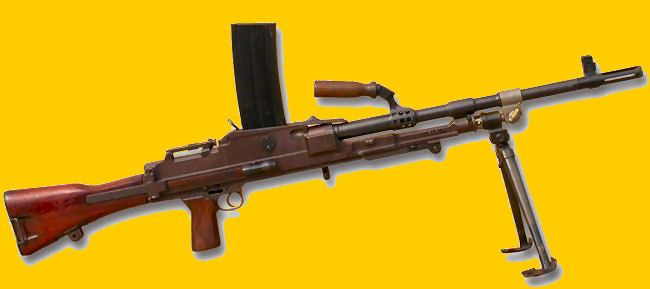
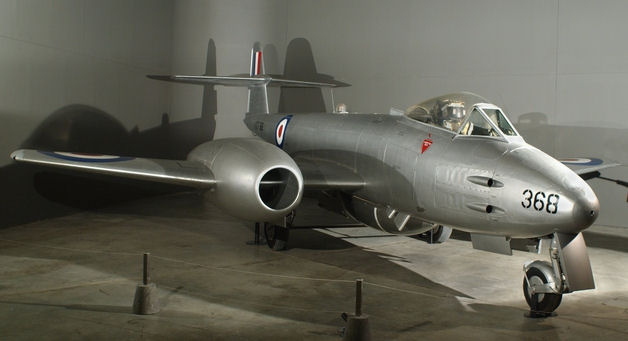 target area. After all, it wasn’t every day a peace-time fighter pilot
got the opportunity to shoot a real live aeroplane out of the sky. It
was now 11.00 o’clock. The earth-bound entrepreneurs selling hot dogs
were now taking bets as to just who would shoot down this “damn
nuisance” aeroplane. Radios blared in every home as Sydney’s disc
jockeys kept up a running commentary on events, venturing all sorts of
solutions and remedies, but very little real help. In the meantime,
half-a-million Sydney-ites were gazing skywards.
target area. After all, it wasn’t every day a peace-time fighter pilot
got the opportunity to shoot a real live aeroplane out of the sky. It
was now 11.00 o’clock. The earth-bound entrepreneurs selling hot dogs
were now taking bets as to just who would shoot down this “damn
nuisance” aeroplane. Radios blared in every home as Sydney’s disc
jockeys kept up a running commentary on events, venturing all sorts of
solutions and remedies, but very little real help. In the meantime,
half-a-million Sydney-ites were gazing skywards. 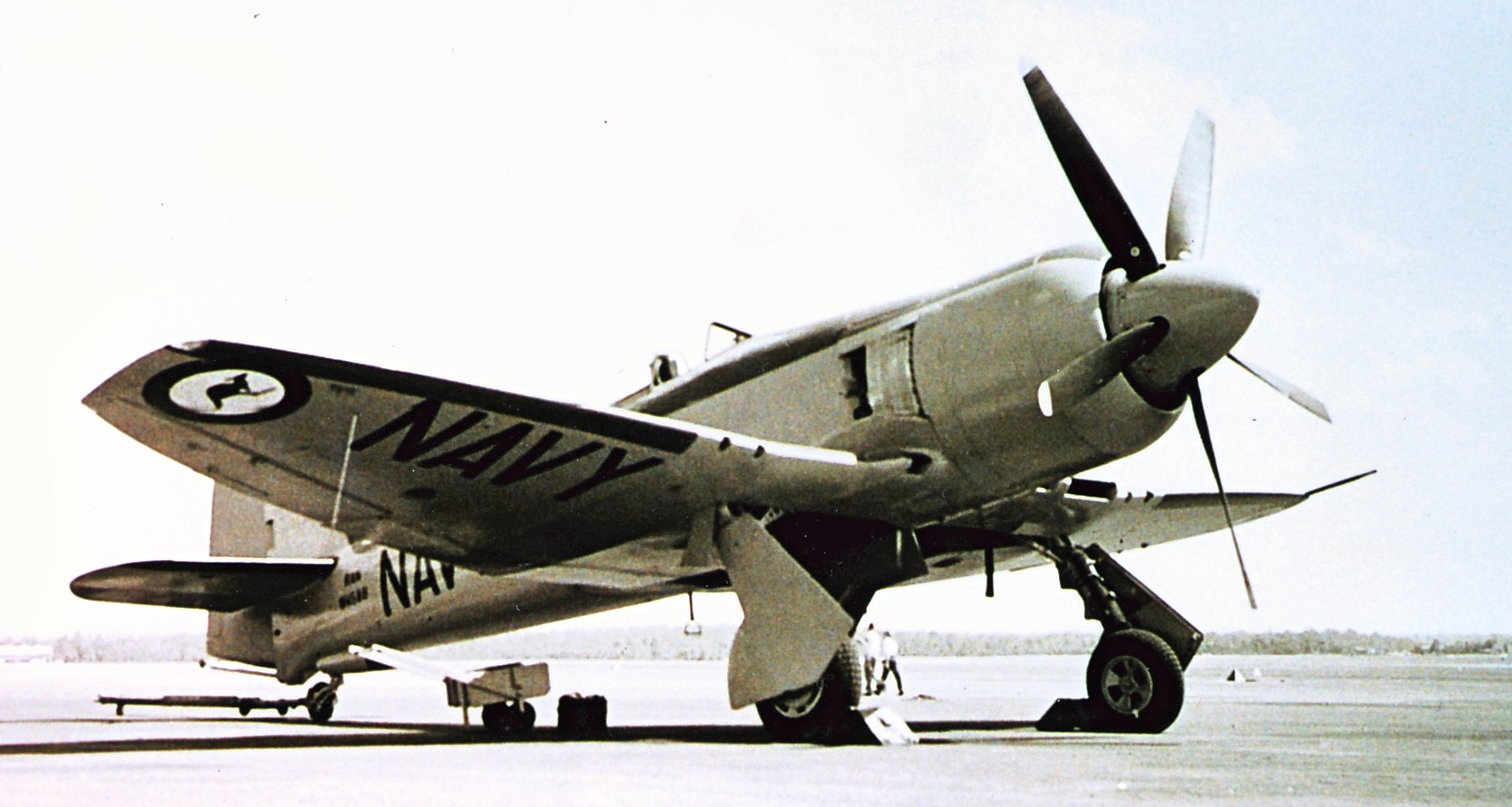
.jpg)
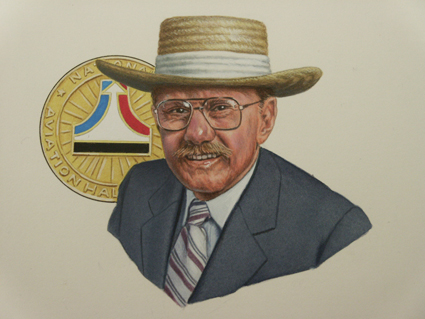
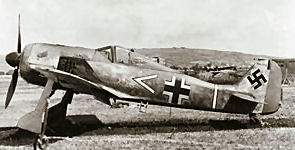 in
the Netherlands. He was assigned to flight test duty at Wright Field
after the war. There he impressed and befriended Chuck Yeager. When
Yeager was later asked who he wanted for flight crew for the supersonic
Bell X-1 flight, he named Hoover. Hoover became Yeager's backup pilot in
the Bell X-1 program and flew chase for Yeager in a Lockheed P-80
Shooting Star during the Mach 1 flight. He also flew chase for the 50th
anniversary of the Mach 1 flight in an F-16 Fighting Falcon.
in
the Netherlands. He was assigned to flight test duty at Wright Field
after the war. There he impressed and befriended Chuck Yeager. When
Yeager was later asked who he wanted for flight crew for the supersonic
Bell X-1 flight, he named Hoover. Hoover became Yeager's backup pilot in
the Bell X-1 program and flew chase for Yeager in a Lockheed P-80
Shooting Star during the Mach 1 flight. He also flew chase for the 50th
anniversary of the Mach 1 flight in an F-16 Fighting Falcon. 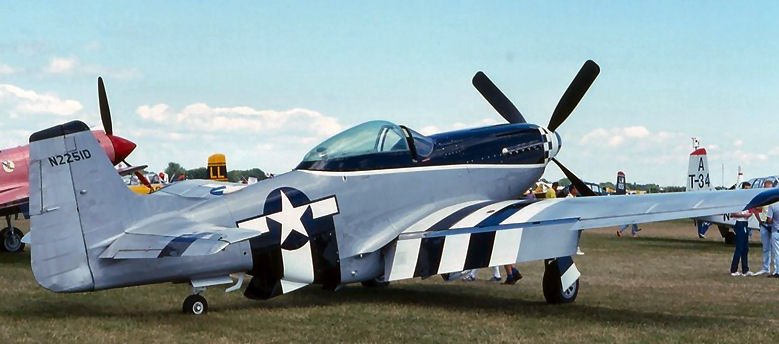 demonstrating
one of North American's most famous products, the P-51 Mustang, at
airshows around the country. The Hoover Mustang (N2251D) was purchased
by North American Aviation from Dave Lindsay's Cavalier Aircraft Corp.
in 1962. A second Mustang (N51RH), later named "Ole Yeller," was
purchased by North American Rockwell from Cavalier in 1971 to replace
the earlier aircraft that was destroyed in a ground accident when an
oxygen bottle exploded after being overfilled. Hoover demonstrated the
Mustang and later the Aero Commander at hundreds of airshows until his
retirement in the 1990s. In 1997 Hoover sold "Ole Yeller" to his good
friend John Bagley of Rexburg, Idaho. "Ole Yeller" still flies
frequently and is based out of the Legacy Flight Museum in Rexburg,
Idaho.
demonstrating
one of North American's most famous products, the P-51 Mustang, at
airshows around the country. The Hoover Mustang (N2251D) was purchased
by North American Aviation from Dave Lindsay's Cavalier Aircraft Corp.
in 1962. A second Mustang (N51RH), later named "Ole Yeller," was
purchased by North American Rockwell from Cavalier in 1971 to replace
the earlier aircraft that was destroyed in a ground accident when an
oxygen bottle exploded after being overfilled. Hoover demonstrated the
Mustang and later the Aero Commander at hundreds of airshows until his
retirement in the 1990s. In 1997 Hoover sold "Ole Yeller" to his good
friend John Bagley of Rexburg, Idaho. "Ole Yeller" still flies
frequently and is based out of the Legacy Flight Museum in Rexburg,
Idaho.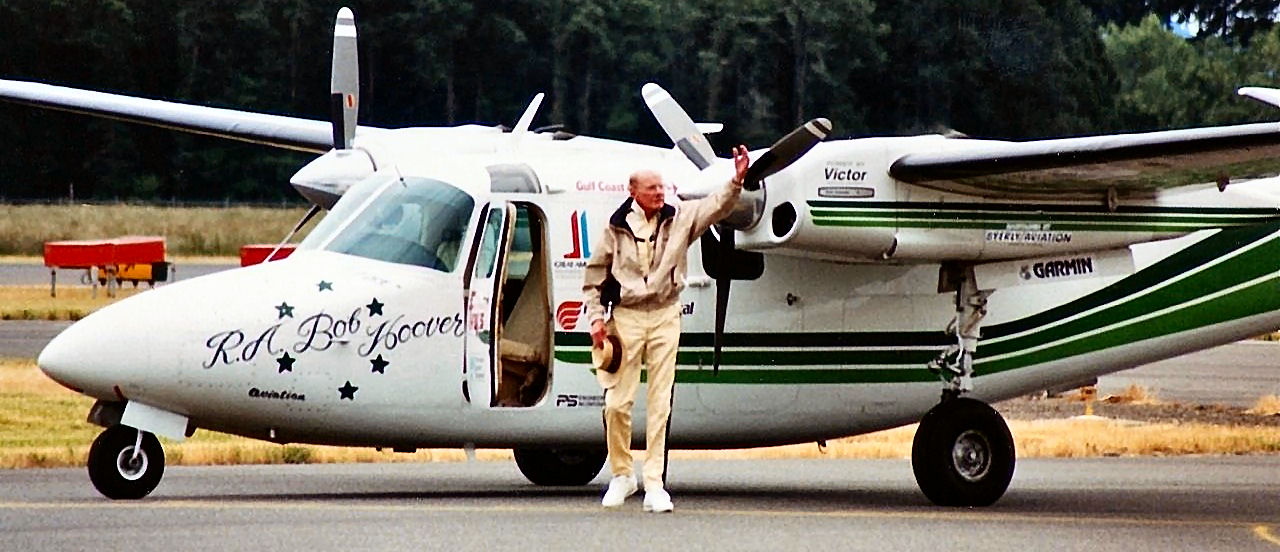
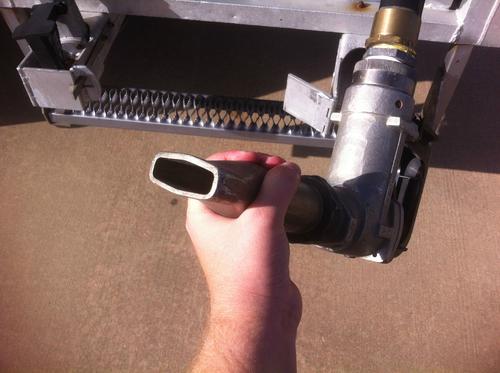
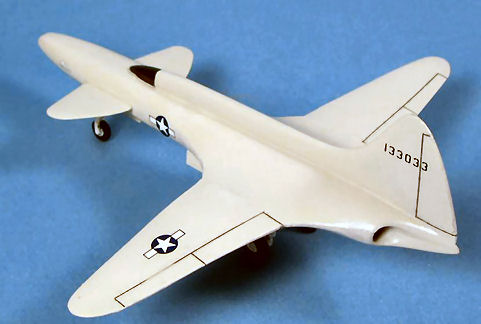 different versions on the drawing board. In the meantime, Lockheed was
working on an axial-flow L-1000 turbojet engine of their own design,
which was intended to power the culmination of the twin-engine jet
fighter project, the Model L-133-02-01.
different versions on the drawing board. In the meantime, Lockheed was
working on an axial-flow L-1000 turbojet engine of their own design,
which was intended to power the culmination of the twin-engine jet
fighter project, the Model L-133-02-01.